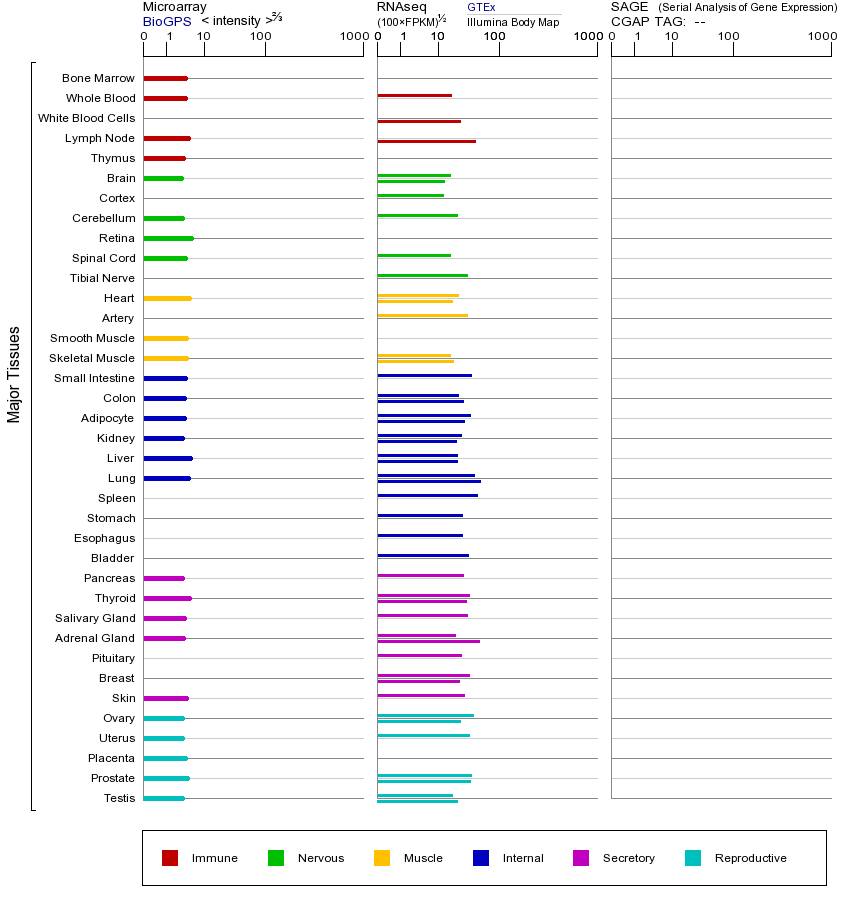CD40 (CD40 molecule)
- symbol:
- CD40
- locus group:
- protein-coding gene
- location:
- 20q13.12
- gene_family:
- CD molecules|Tumor necrosis factor receptor superfamily
- alias symbol:
- p50|Bp50
- alias name:
- None
- entrez id:
- 958
- ensembl gene id:
- ENSG00000101017
- ucsc gene id:
- uc002xrg.2
- refseq accession:
- NM_001250
- hgnc_id:
- HGNC:11919
- approved reserved:
- 1993-08-27
CD40是一种位于细胞表面的受体蛋白,属于肿瘤坏死因子受体超家族(TNFRSF),其基因位于人类第20号染色体上。它的主要功能是通过与配体CD40L(CD154)结合,激活免疫细胞(如B细胞、树突细胞和巨噬细胞)的信号通路,从而调节体液免疫和细胞免疫应答。CD40-CD40L相互作用能促进B细胞增殖、抗体类别转换(class switch recombination)和体细胞高频突变(somatic hypermutation),这对产生高亲和力抗体至关重要。CD40还在T细胞活化、抗原呈递细胞的成熟以及炎症反应中起关键作用。若CD40基因发生功能丧失性突变(loss-of-function mutation),可能导致免疫缺陷疾病,如高IgM综合征(HIGM),其特征是IgG、IgA和IgE抗体水平低下,而IgM水平正常或升高,患者易受反复感染。相反,CD40的过度表达可能与自身免疫性疾病(如系统性红斑狼疮)或某些B细胞淋巴瘤相关,因其持续激活免疫反应可能导致异常增殖或自身抗体产生。CD40也参与动脉粥样硬化等炎症性疾病,其信号通路促进血管内皮细胞的炎症因子释放。在基因家族层面,TNFRSF成员均含有富含半胱氨酸的胞外结构域,并通过激活NF-κB、MAPK等通路调控细胞存活、分化和炎症。若CD40表达下调,可能削弱免疫应答,增加感染风险;而过表达可能引发过度炎症或自身免疫反应。该基因也是癌症免疫治疗的靶点之一,例如CD40激动剂被用于增强抗肿瘤免疫。专业术语解释:抗体类别转换指B细胞改变抗体类型(如从IgM转为IgG)的过程;体细胞高频突变是B细胞在生发中心中抗体基因随机突变以优化抗原结合力的机制;NF-κB和MAPK是调控基因表达和细胞反应的信号分子通路。
This gene is a member of the TNF-receptor superfamily. The encoded protein is a receptor on antigen-presenting cells of the immune system and is essential for mediating a broad variety of immune and inflammatory responses including T cell-dependent immunoglobulin class switching, memory B cell development, and germinal center formation. AT-hook transcription factor AKNA is reported to coordinately regulate the expression of this receptor and its ligand, which may be important for homotypic cell interactions. Adaptor protein TNFR2 interacts with this receptor and serves as a mediator of the signal transduction. The interaction of this receptor and its ligand is found to be necessary for amyloid-beta-induced microglial activation, and thus is thought to be an early event in Alzheimer disease pathogenesis. Mutations affecting this gene are the cause of autosomal recessive hyper-IgM immunodeficiency type 3 (HIGM3). Multiple alternatively spliced transcript variants of this gene encoding distinct isoforms have been reported. [provided by RefSeq, Nov 2014]
该基因是TNF受体超家族的成员。所编码的蛋白质是免疫系统的抗原呈递细胞的受体并介导了各种各样的,包括T细胞依赖的免疫球蛋白类别转换,记忆B细胞发育,和生发中心的形成的免疫和炎症反应是必不可少的。 AT-钩转录因子AKNA报告给协调调节该受体和其配体,其可以是用于同型细胞的相互作用重要的表达。适配器蛋白TNFR2这种受体相互作用,并作为信号转导的调解人。该受体和其配体的相互作用被发现是必需的淀粉样蛋白β诱导的小神经胶质细胞活化,并因此被认为是阿尔茨海默病发病的早期事件。影响该基因突变是常染色体隐性遗传高IgM免疫缺陷型3(HIGM3)的原因。已经报道了这个基因编码不同同种型的多个可变剪接转录物变体。 [由RefSeq的,2014年11月提供]
基因本体信息
CD40基因(以及对应的蛋白质)的细胞分布位置:
- 质膜
- 细胞质
- 细胞外
- 高尔基体
- 囊泡
- 细胞骨架
- 内质网
- 细胞核
- 内体
- 溶酶体
- 线粒体
CD40基因的本体(GO)信息:
| 名称 |
|---|
| 4064 NF-kappa B signaling pathway [PATH:hsa04064] |
| 4060 Cytokine-cytokine receptor interaction [PATH:hsa04060] |
| 4514 Cell adhesion molecules (CAMs) [PATH:hsa04514] |
| 4620 Toll-like receptor signaling pathway [PATH:hsa04620] |
| 4672 Intestinal immune network for IgA production [PATH:hsa04672] |
| 5202 Transcriptional misregulation in cancers [PATH:hsa05202] |
| 5310 Asthma [PATH:hsa05310] |
| 5322 Systemic lupus erythematosus [PATH:hsa05322] |
| 5320 Autoimmune thyroid disease [PATH:hsa05320] |
| 5330 Allograft rejection [PATH:hsa05330] |
| 5340 Primary immunodeficiency [PATH:hsa05340] |
| 5416 Viral myocarditis [PATH:hsa05416] |
| 5166 HTLV-I infection [PATH:hsa05166] |
| 5169 Epstein-Barr virus infection [PATH:hsa05169] |
| 5144 Malaria [PATH:hsa05144] |
| 5145 Toxoplasmosis [PATH:hsa05145] |
| 名称 |
|---|
| Adaptive Immune System |
| Immune System |
| Immunoregulatory interactions between a Lymphoid and a non-Lymphoid cell |
| 疾病名称 | 关系值 | NofPmids | NofSnps | 来源 |
| Hyper-IgM Immunodeficiency Syndrome, Type 3 | 0.36 | 1 | 1 | CLINVAR_ORPHANET_UNIPROT |
| Rheumatoid Arthritis | 0.277186332 | 29 | 10 | BeFree_CTD_human_GAD_GWASCAT_LHGDN |
| Multiple Sclerosis | 0.131911105 | 11 | 1 | BeFree_CTD_human_GAD |
| Hyperimmunoglobulin M syndrome | 0.126524536 | 14 | 0 | BeFree_CTD_human_LHGDN |
| Mucocutaneous Lymph Node Syndrome | 0.126091273 | 7 | 1 | BeFree_CTD_human_GAD |
| Hepatitis B, Chronic | 0.120542884 | 2 | 1 | BeFree_GWASCAT |
| Mammary Neoplasms | 0.120271442 | 2 | 0 | BeFree_CTD_human |
| Status Epilepticus | 0.12 | 1 | 0 | CTD_human |
| Atherosclerosis | 0.091801484 | 21 | 2 | BeFree_GAD_LHGDN_RGD |
| Asthma | 0.091539974 | 7 | 0 | BeFree_GAD_LHGDN_RGD |
联系方式
山东省济南市章丘区文博路2号 齐鲁师范学院 genelibs生信实验室
山东省济南市高新区舜华路750号大学科技园北区F座4单元2楼
电话: 0531-88819269
E-mail: product@genelibs.com
微信公众号
关注微信订阅号,实时查看信息,关注医学生物学动态。







